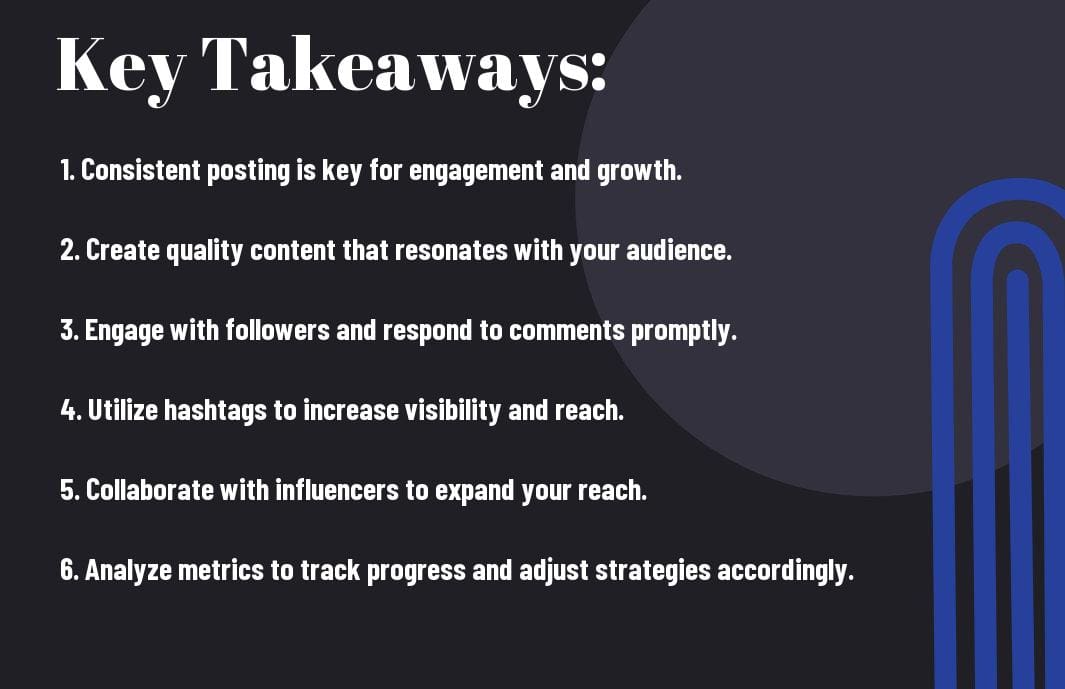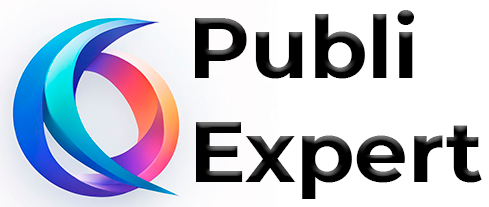Steps to dominate social media marketing tactics are crucial for businesses to stay ahead in today’s digital world. With the overwhelming amount of content and competition on various platforms, it can be challenging to stand out and reach your target audience effectively. However, by implementing the right strategies and utilizing the powerful tools available, businesses can significantly enhance their online presence and drive more engagement and conversions.
In this blog post, we will discuss simple yet effective steps that businesses can take to dominate their social media marketing efforts. By following these steps and incorporating them into your overall marketing strategy, you can increase brand awareness, improve customer engagement, and boost sales through social media platforms.
Key Takeaways:
- Consistent Content: Posting regular and engaging content is crucial to building a strong social media presence.
- Utilize Analytics: Use data analytics to track the performance of your social media efforts and make data-driven decisions.
- Engage with Followers: Interact with your audience through comments, messages, and polls to build relationships and foster a loyal community.

Fundamentals of Social Media Marketing
Little do businesses realize the vast potential of social media marketing in reaching their target audience and boosting brand awareness. To effectively utilize social media platforms for marketing purposes, it is important to have a well-thought-out strategy. For a comprehensive guide on creating a successful social media marketing strategy, check out the 20 Step Social Media Marketing Strategy for Businesses in …
Understanding Different Social Media Platforms
Media platforms such as Facebook, Instagram, Twitter, LinkedIn, and Pinterest each have unique characteristics and user demographics. Understanding these differences is crucial in tailoring your content to resonate with your target audience on each platform. For example, visually appealing content performs well on Instagram and Pinterest, while Twitter is ideal for short and concise updates. By identifying the strengths of each platform, businesses can create a diverse and engaging social media presence.
Setting Clear Objectives and Goals
Goals are important in guiding your social media marketing efforts and measuring success. Before entering into posting content, it is crucial to establish clear objectives that align with your overall business goals. Whether your aim is to increase brand awareness, drive website traffic, or boost sales, setting specific, measurable, achievable, relevant, and time-bound (SMART) goals will ensure that your social media strategy is effective. This includes defining key performance indicators (KPIs) to track your progress and make data-driven decisions.
This approach not only provides focus and direction but also allows businesses to evaluate the performance of their social media campaigns. By regularly monitoring and analyzing metrics such as engagement rates, click-through rates, and conversion rates, companies can identify areas for improvement and optimize their strategy for better results.
Crafting Your Social Media Strategy
All How to Build Your Social Media Marketing Strategy begins with a solid foundation. When putting together your social media marketing strategy, the first step is to identify your target audience. Understanding who your audience is will help you tailor your content and messaging to resonate with them effectively.
Identifying Your Target Audience
Media plays a crucial role in defining your target audience. By analyzing demographics, interests, and behaviors, you can create buyer personas that represent your ideal customers. This information will guide your content creation and engagement strategies, ensuring that your content is relevant and valuable to the people you want to reach.
Content Planning & Calendar Creation
Your social media strategy is incomplete without a well-thought-out content plan and calendar. This involves deciding what type of content you will create, how often you will post, and when you will post. By planning ahead and scheduling your content in a calendar, you can ensure a consistent flow of posts that align with your overall marketing goals.
This approach allows you to maintain a strong presence on social media platforms and engage with your audience regularly. By staying organized and strategic in your content planning, you can maximize the impact of your social media efforts and drive meaningful results for your business.
The Role of Brand Voice and Persona
This section emphasizes the importance of brand voice and persona in your social media strategy. Your brand voice is the unique personality and style that sets you apart from competitors, while your brand persona is the specific traits and characteristics that define your brand’s identity. By cultivating a consistent brand voice and persona across all your social media channels, you can strengthen brand recognition and build deeper connections with your audience.
Strategy is key in developing a brand voice and persona that resonates with your target audience. By aligning your brand’s values and messaging with the preferences of your audience, you can create a more authentic and compelling brand experience. This will help you build trust, loyalty, and credibility with your followers, ultimately driving greater engagement and conversions for your business.
Content Creation and Curation
Unlike in the past, creating and curating content for social media is now more critical than ever. With the rise of various platforms and the abundance of information available, it is vital to stand out from the crowd.
Types of Content for Maximum Engagement
Any successful social media strategy relies on a diverse range of content to keep your audience engaged. From informative blog posts to eye-catching visuals and interactive videos, there are countless ways to capture the attention of your followers. The key is to tailor your content to suit the preferences of your target audience and provide value with every post. The more variety you offer, the more likely you are to connect with a wider range of users.
| Blog Posts | Visual Content |
| Infographics | Video Content |
| Polls and Surveys | User-Generated Content |
| Live Streaming | Interactive Content |
| Podcasts | Behind-the-Scenes Content |
The key to content diversity is to keep your audience surprised and engaged, leading to increased interaction and brand loyalty.
Leveraging Multimedia to Enhance Your Message
Content is king in social media, and multimedia elements can take your content to the next level. By incorporating visuals, videos, and interactive elements into your posts, you can create a more immersive and engaging experience for your followers. A well-crafted video can convey a message more effectively than a thousand words, while stunning visuals can stop scrollers in their tracks.
A picture may be worth a thousand words, but a video could be worth a million likes and shares. The visual nature of social media means that leveraging multimedia elements is crucial to capturing and retaining the attention of your audience.
Best Practices for Curating Third-Party Content
Content curation is a valuable tool in any social media marketer’s arsenal. By sharing relevant and high-quality content from third-party sources, you can position yourself as a thought leader in your industry and provide your audience with a well-rounded experience. When curating content, it’s important to ensure that the information is accurate, up-to-date, and aligns with your brand values.
Creation of an effective content curation strategy involves identifying reputable sources, providing proper attribution, and adding your unique perspective to the content. By curating content strategically, you can save time on creating original posts while still delivering valuable information to your audience.
Growing Your Social Media Presence
Organic Growth Tactics
One of the key ways to grow your social media presence organically is by creating valuable and engaging content that resonates with your target audience. This could include informative blog posts, eye-catching visuals, entertaining videos, or engaging polls and quizzes. By consistently providing quality content that your followers find valuable, you can attract more followers and increase engagement on your social media profiles.
Paid Advertising and Its Advantages
Presence
One effective way to quickly grow your social media presence is through paid advertising. Platforms like Facebook, Instagram, and LinkedIn offer robust advertising tools that allow you to target specific demographics, interests, and behaviors. By investing in paid advertising, you can reach a larger audience, increase brand awareness, drive website traffic, and generate leads or sales. Unlike organic growth tactics that may take time to see results, paid advertising can provide immediate visibility and results.
Community Building and User Interaction
Paid advertising can be a powerful tool to boost your social media presence, but it’s vital to complement it with community building and user interaction. Building a strong community around your brand involves engaging with your followers, responding to comments and messages, and creating a sense of belonging. User interaction not only fosters loyalty and trust but also encourages word-of-mouth marketing as satisfied customers share their positive experiences with others.
Cross-Promotion Across Different Platforms
Building
Social media platforms offer unique opportunities to reach different audiences, and cross-promotion across these platforms can help you maximize your reach and engagement. For instance, you can leverage the visual appeal of Instagram to drive traffic to your blog, promote exclusive deals on Twitter, or share behind-the-scenes content on Snapchat. By strategically cross-promoting your content across different platforms, you can reinforce your messaging, increase brand visibility, and attract followers who may not have discovered you otherwise.
Analytics and Measurement
Once again, analyzing the data from your social media efforts is crucial to understanding what is working and what isn’t. By measuring your performance, you can make informed decisions to improve your strategy and achieve better results. Analytics tools provide valuable insights that can guide your future content creation and engagement tactics.
Key Metrics for Assessing Social Media Performance
One of the key metrics to assess social media performance is engagement rate, which measures the level of interaction your content receives. Other important metrics include reach, follower growth, click-through rate, and conversions. By monitoring these metrics regularly, you can gauge the effectiveness of your social media campaigns and make adjustments as needed to boost your performance.
Tools for Monitoring and Analyzing Data
Analytics tools such as Google Analytics, Sprout Social, Hootsuite, and Buffer help you monitor and analyze your social media data effectively. These tools provide detailed insights into your audience demographics, engagement metrics, and content performance. With these tools, you can track your progress, identify trends, and make data-driven decisions to optimize your social media strategy.
Analytics tools are crucial for understanding the impact of your social media efforts. By leveraging these tools, you can gain valuable insights that will help you refine your strategy and achieve your marketing goals successfully.
Adapting Strategy Based on Insights
With the data gathered from analytics tools, you can adapt your social media strategy based on insights and trends. If you notice a particular type of content resonating well with your audience, you can create more of that content to drive engagement. Similarly, if certain posts are not performing as expected, you can tweak your strategy to improve results. By staying agile and responsive to data, you can continuously optimize your social media efforts for maximum impact.
Tools for monitoring and analyzing data are crucial for staying competitive in the ever-evolving landscape of social media marketing. By using the right tools to track your performance and adapt your strategy, you can stay ahead of the curve and achieve your marketing objectives.
Social Media Crisis Management
After implementing your social media marketing tactics successfully, it’s crucial to prepare for potential crises that may arise. Social media crisis management plays a vital role in maintaining a positive brand image and reputation. Being proactive and prepared is key to effectively managing any unforeseen challenges that may come your way.
Identifying and Mitigating Risks
Management of social media crises begins with identifying potential risks to your brand. Conduct a thorough audit of your social media platforms to pinpoint areas that could potentially spark negative attention. Recognize common triggers such as customer complaints, negative comments, or viral misinformation that could escalate into a crisis. Once risks are identified, develop a strategy to mitigate these risks by creating response protocols, setting up monitoring systems, and training your team to handle crises effectively.
Best Practices for Handling Negative Feedback
With the prevalence of social media, negative feedback can spread rapidly and damage your brand’s reputation. It is important to respond promptly and professionally to address any negative comments or feedback. Acknowledge the issue, apologize if necessary, and offer solutions to resolve the issue. Show empathy and transparency in your responses to demonstrate that you value customer feedback and are committed to addressing concerns.
Risks
Advanced Tactics for Social Media Excellence
- Influencer Marketing and Partnership Development
What is it? Why it’s important Influencer Marketing involves partnering with influential individuals to promote your brand. It can help reach a larger audience and build credibility for your brand. - Implementing Contests and Promotions
What is it? Why it’s important Contests and promotions are interactive ways to engage your audience and increase brand awareness. They can generate buzz, increase social media following, and drive traffic to your website.
Influencer Marketing and Partnership Development
Advanced tactics for social media excellence include leveraging influencer marketing and developing partnerships with key individuals in your industry. By collaborating with influencers who have a significant following and credibility, you can extend your brand reach and connect with new audiences. Building strong partnerships can lead to mutual benefits, such as co-branded campaigns, increased visibility, and enhanced reputation.
Implementing Contests and Promotions
Advanced social media strategies involve implementing contests and promotions to drive engagement and boost brand recognition. Contests can create excitement among your followers, encouraging them to participate and share your content with their networks. Promotions, such as discounts or exclusive offers, can incentivize customers to take action and make a purchase, ultimately leading to increased sales and brand loyalty.
This interactive approach not only increases brand visibility but also fosters a sense of community among your audience, enhancing brand loyalty and customer retention.
Leveraging Trends and Real-time Marketing
With the ever-evolving landscape of social media, staying ahead of trends and leveraging real-time marketing can give your brand a competitive edge. By monitoring trending topics and participating in relevant conversations, you can keep your content fresh and engaging. Real-time marketing allows you to connect with your audience in the moment, showing that your brand is current and responsive to their needs.
Marketing strategies that tap into current trends and events can attract attention and spark conversations, leading to increased brand visibility and engagement.
Conclusion
Taking this into account, mastering social media marketing tactics is crucial for any business looking to thrive in the digital age. By following these easy steps, businesses can effectively reach and engage with their target audience, build brand credibility, and drive sales. Consistency, creativity, and engagement are key to dominating social media platforms and staying ahead of the competition.
It is important to continuously analyze and adapt strategies to keep up with the ever-changing landscape of social media. By staying informed about industry trends, understanding your audience, and experimenting with different tactics, businesses can achieve success and make the most of their social media marketing efforts. With dedication and a strategic approach, businesses can dominate social media platforms and ultimately see a significant return on investment.
FAQ
Q: What are the benefits of utilizing social media marketing tactics?
A: By using social media marketing tactics, businesses can increase brand awareness, engage with their target audience, drive traffic to their website, generate leads, and ultimately boost sales.
Q: How can I effectively use hashtags in my social media marketing strategy?
A: To leverage hashtags effectively, research popular and relevant hashtags in your industry, use a mix of trending and niche hashtags, limit the number of hashtags per post, and create a branded hashtag for your business.
Q: What is the importance of creating high-quality content for social media marketing?
A: High-quality content helps businesses establish credibility, build trust with their audience, increase engagement, and ultimately drive conversions. It is vital for a successful social media marketing strategy.
Q: How can I engage with my audience on social media platforms?
A: To engage with your audience, respond to comments and messages promptly, ask questions to spark conversations, run polls and surveys, share user-generated content, and host giveaways or contests.
Q: What are some key metrics to track to measure the success of social media marketing efforts?
A: Important metrics to track include reach, engagement (likes, comments, shares), click-through rate, conversion rate, and return on investment (ROI) to evaluate the effectiveness of your social media marketing campaigns.
Q: How can I stay updated with the latest social media marketing trends and changes?
A: Stay informed by following industry experts and blogs, attending webinars and conferences, joining online communities, and regularly checking social media platforms for updates and new features.
Q: What are some common mistakes to avoid in social media marketing?
A: Common mistakes to avoid include overposting, not engaging with your audience, using irrelevant hashtags, being overly promotional, not analyzing data and results, and neglecting to tailor content for each platform.




